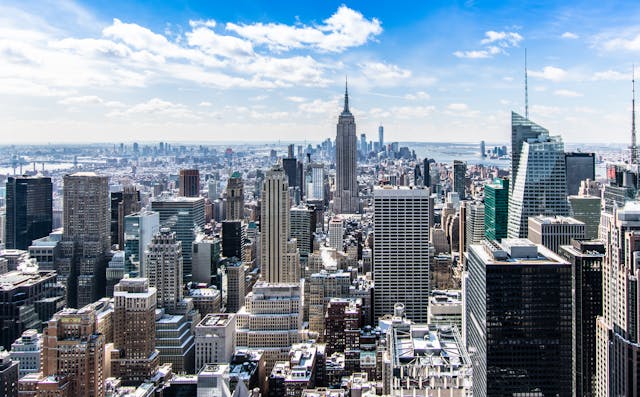
What is a megalopolis? There is no specific number of people, but it is an extremely large group of cities that are joined together by their transport, economy, resources, and other things.
The number of megalopolises is increasing year by year as more and more people move into urban areas. A city that has over 10 million people is called a megacity. There is no magic number of how many people make a megalopolis, but they form when several megacities come together. It depends how you define it, but there are said to be 33 megalopolises at the moment. That number is predicted to rise to close to 50 by 2050 as the populations of countries like India and many African nations rise. Currently, the largest megalopolis in the world is said to be the Greater Tokyo Area, which has a population of about 38 million people. This will change over the coming years as the population of Japan starts to decline and the Delhi Megalopolis will probably be the largest with about 50 million people by 2050. Although, technically the largest megalopolis in the world at the moment is the Yangtze River Delta megalopolis which has a combined population of 240 million people! Not everyone agrees that it is a megalopolis, but it does certainly appear to be one.
The concept of a megalopolis is relatively recent. The word was coined to mean a group of large interconnected cities by a French political science professor in 1961. He was talking about the northeastern United States, where several large metropolitan areas had become connected. This was probably the world’s first real megalopolis. There have been many very large cities throughout history, but they have never been able to connect the way that they do now.
Until the Industrial Revolution, cities never grew as large as they do today. One of the most obvious reasons for that is the population was much smaller than it is today. The world population didn’t reach one billion until 1804, so for most of human history there have been far smaller numbers of people that needed to fit in cities and it was improbable that cities would join together. One of the reasons for that was the walls that surrounded almost every city for defensive purposes. These kept people out, but they also created an “us” and “them” mentality, which meant people wouldn’t want to connect to another city. Also, the majority of people worked in agriculture, which kept the cities smaller.
The second agricultural revolution and the Industrial Revolution changed all of this and people started to flood into the cities because that was where workers were needed. Improvements in agriculture meant fewer people could stay out of cities and produce enough food for the rest of the people and the size of cities began to grow. Rome is said to be the first city to reach one million people. London was the first city to reach two million people in 1850 and that was close to 2000 years after Rome. New York was the first city to reach ten million people in 1936 and it became the world’s first megacity. Tokyo was the first city to reach twenty million people in 1975.
What makes a megalopolis possible? The skyscraper, the elevator, and infrastructure developments allowed cities to grow larger and hold more people. However, as populations continue to grow, the available space in a city is obviously limited. The only way to fit more people into the city is to keep extending it outwards. Faster subway and rail networks, along with new road systems have made all of this possible. Before the invention of high speed rail and the subway, it would have been technically impossible for a megacity or a megalopolis to form. In countries like the USA and Japan, the cities have slowly spread out until the start to touch each other and all the gaps between them become filled in with urban areas. All of the parts of the city are connected, but there are several hubs through the megalopolis. Once a megacity forms, it is very likely that it and the megacities around it will become a megalopolis because they attract money, investment, international companies, and therefore more people. They grow larger because they are growing larger.
There are several problems with megacities and one of them is their resources. They are enormous collections of people and they need to be able to supply those people with clean water and electricity, among other things. In some developing countries, and even in some developed countries, this is proving problematic. They are also gigantic heat islands that have a big impact on climate change. The dark concrete and tarmac they are made of absorbs a lot of heat and megalopolises create their own weather systems. There is also the psychological impact of living in such a large city. Studies have shown that greenery and nature is necessary for our mental health. Unless the megalopolises can build enough parks, they could have problems.
Photo by Lukas Kloeppel: https://www.pexels.com/photo/empire-state-building-new-york-466685/
Sources
https://education.nationalgeographic.org/resource/history-cities
https://en.wikipedia.org/wiki/Megalopolis
https://en.wikipedia.org/wiki/Yangtze_Delta
https://www.statista.com/chart/29152/the-worlds-next-megacities
https://theconversation.com/the-era-of-the-megalopolis-how-the-worlds-cities-are-merging-193424
https://usinfo.org/oag/geog04.htm
https://en.wikipedia.org/wiki/List_of_largest_cities_throughout_history

Pingback: #861 What was the Great Stink?